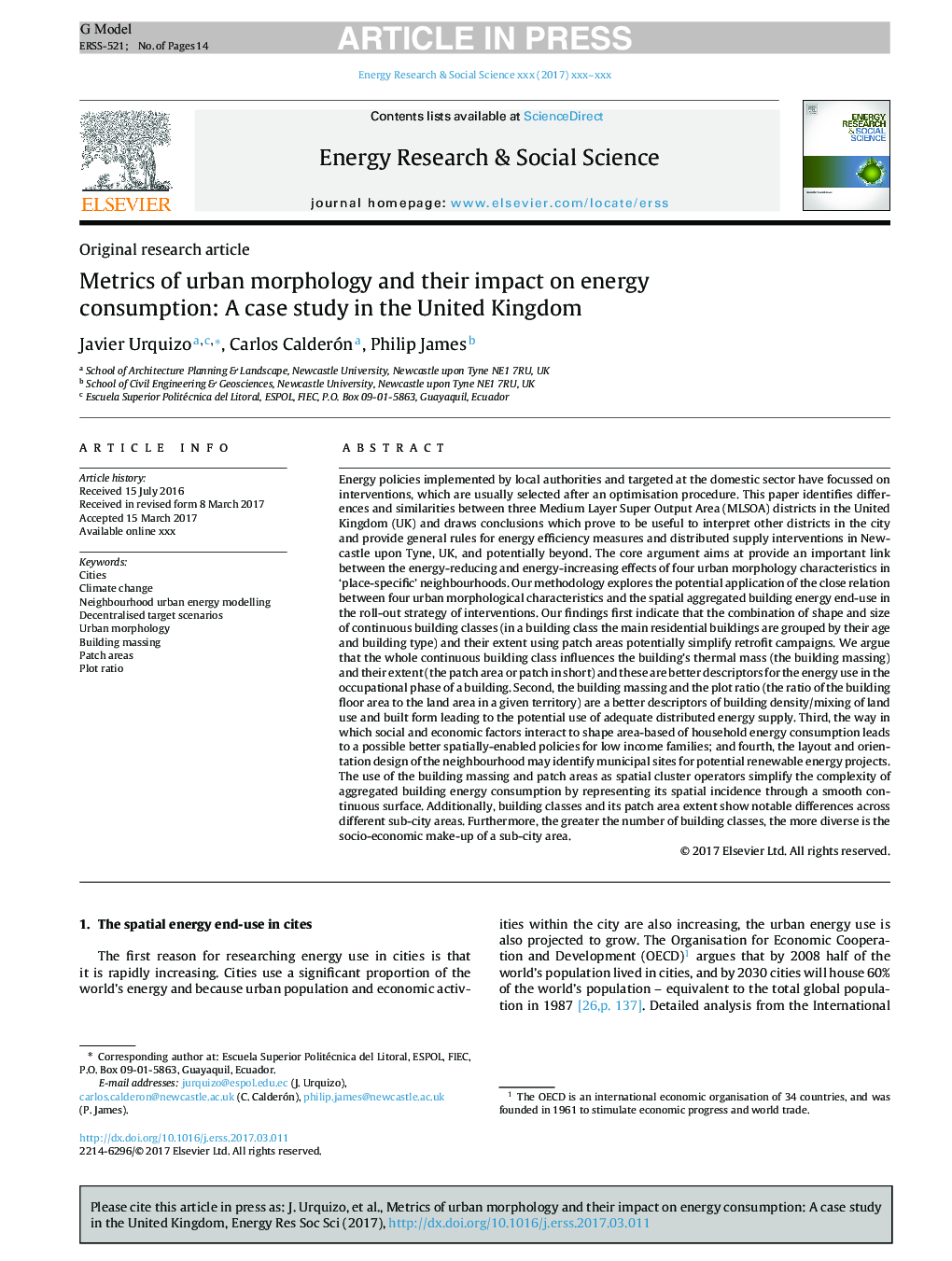| کد مقاله | کد نشریه | سال انتشار | مقاله انگلیسی | نسخه تمام متن |
|---|---|---|---|---|
| 4761675 | 1422569 | 2017 | 14 صفحه PDF | دانلود رایگان |
عنوان انگلیسی مقاله ISI
Metrics of urban morphology and their impact on energy consumption: A case study in the United Kingdom
ترجمه فارسی عنوان
معیارهای مورفولوژی شهری و تاثیر آن بر مصرف انرژی: مطالعه موردی در انگلستان
دانلود مقاله + سفارش ترجمه
دانلود مقاله ISI انگلیسی
رایگان برای ایرانیان
کلمات کلیدی
شهرها، تغییر آب و هوا، مدل سازی انرژی شهری همسایگی، سناریوهای هدف منحرف شده، مورفولوژی شهری، انبساط ساختمان، مناطق پچ، نسبت مساحت،
موضوعات مرتبط
مهندسی و علوم پایه
مهندسی انرژی
انرژی (عمومی)
چکیده انگلیسی
Energy policies implemented by local authorities and targeted at the domestic sector have focussed on interventions, which are usually selected after an optimisation procedure. This paper identifies differences and similarities between three Medium Layer Super Output Area (MLSOA) districts in the United Kingdom (UK) and draws conclusions which prove to be useful to interpret other districts in the city and provide general rules for energy efficiency measures and distributed supply interventions in Newcastle upon Tyne, UK, and potentially beyond. The core argument aims at provide an important link between the energy-reducing and energy-increasing effects of four urban morphology characteristics in 'place-specific' neighbourhoods. Our methodology explores the potential application of the close relation between four urban morphological characteristics and the spatial aggregated building energy end-use in the roll-out strategy of interventions. Our findings first indicate that the combination of shape and size of continuous building classes (in a building class the main residential buildings are grouped by their age and building type) and their extent using patch areas potentially simplify retrofit campaigns. We argue that the whole continuous building class influences the building's thermal mass (the building massing) and their extent (the patch area or patch in short) and these are better descriptors for the energy use in the occupational phase of a building. Second, the building massing and the plot ratio (the ratio of the building floor area to the land area in a given territory) are a better descriptors of building density/mixing of land use and built form leading to the potential use of adequate distributed energy supply. Third, the way in which social and economic factors interact to shape area-based of household energy consumption leads to a possible better spatially-enabled policies for low income families; and fourth, the layout and orientation design of the neighbourhood may identify municipal sites for potential renewable energy projects. The use of the building massing and patch areas as spatial cluster operators simplify the complexity of aggregated building energy consumption by representing its spatial incidence through a smooth continuous surface. Additionally, building classes and its patch area extent show notable differences across different sub-city areas. Furthermore, the greater the number of building classes, the more diverse is the socio-economic make-up of a sub-city area.
ناشر
Database: Elsevier - ScienceDirect (ساینس دایرکت)
Journal: Energy Research & Social Science - Volume 32, October 2017, Pages 193-206
Journal: Energy Research & Social Science - Volume 32, October 2017, Pages 193-206
نویسندگان
Javier Urquizo, Carlos Calderón, Philip James,
